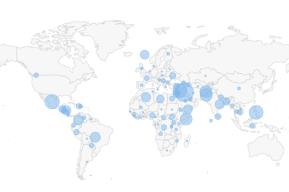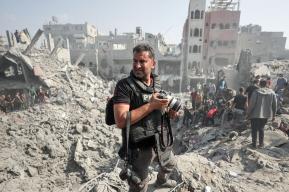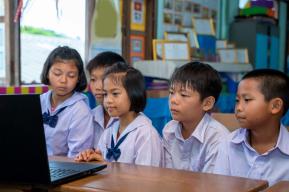Idea
COVID-19: The Norwegian model

Lisbet Jære
Journalist in Oslo, Norway
From March 2020 to June 2022, Arnoldo Frigessi had a full agenda every day. The professor in statistics at the University of Oslo (UiO) and Oslo University Hospital was one of the scientists who worked for the Norwegian Institute of Public Health's (NIPH) modelling team for COVID-19. Day and night.
The health authorities needed to estimate how the pandemic outbreak would impact the population: how the infection would spread, how many people would be hospitalized, and how many would die. This was done by the modelling team.
“It was not uncommon that we worked for 17 hours. My salary is paid for by the taxpayers, and this comes with a great responsibility to the public. Mathematical models are good at explaining or representing complex situations. The pandemic was an example of such a complicated situation; the models tried to show the complex relationship between the behaviour of people, the virus, and the Norwegian health authorities' measures,” Frigessi says.
Complex interdependencies
“Norway was one of the first in the world to have a good model based on mobile data,” Frigessi says. “In addition, we had good population data from before, and good data on the number of hospital admissions and infection rates.” He emphasizes, however, that although a mathematical model can manage to keep track of many individuals and factors that influence the course of infection, it can never be exactly like reality.
Frigessi explains that in Norway, as in many countries, the basis was the so-called SEIR model. SEIR is an epidemiological model used to predict infectious disease dynamics by compartmentalizing the population into four possible states: Susceptible [S], Exposed or latent [E], Infectious [I] or Removed [R]. They created a model adapted to COVID-19 based on population data, mobility data and data about the COVID-19 epidemic.
A mathematical model can manage to keep track of many individuals and factors that influence the course of infection
Simpler models, such as those used with cancer, are built on the assumption that the risk factors are constant over time and place. The challenge with creating a model of a pandemic is precisely that one individual can infect another, and this creates complex dependencies.
Frigessi has extensive experience with modelling infectious diseases. In the early 1990s, for example, he worked on models showing how the HIV infection developed. “A big difference is that HIV developed slowly, whereas COVID-19 did so at record speed. One similarity is that with both COVID-19 and HIV, one can be a carrier of the infection without having symptoms, which was one of the challenges in making the model.”
“The Corona hunter”
It’s the use of mobile data that made the Norwegian model truly stand out. Data from mobile phones can be used to forecast the spread of Covid-19 much more accurately since they provide information about the movement of people.
In 2020, Solveig Engebretsen was named one of the Norwegian leading stars under 30 years old by the newspaper Norwegian Business Daily. Her Ph.D. dealt with the use of mobile phone data in mathematical modelling for the spread of influenza. Frigessi was her supervisor. It was early in 2020 that Engebretsen joined a modelling group, earning the nickname "the Corona hunter".
The group was allowed to use mobile phone data from the telecommunications company Telenor, which covers around half of the Norwegian population.
Mobile data helped refine patterns of infection spread
“Every six hours, we received mobile phone data showing people's movements across municipal boundaries. By mapping how people move, we have created models for how the infection will spread in Norwegian municipalities,” Engebretsen explains.
Challenges in handling the unknown
How quickly COVID-19 is transmitted is described by the R-number. R stands for reproduction number and shows how many people a person with the virus infects. A pandemic dies out when the R number is less than 1. In the model, the R number was based on hospital data and test data. Today, the model is just based on hospitalizations as testing is no longer mandatory.
“We were constantly worried about making a mistake,” says Arnoldo Frigessi. He emphasizes that if he had worked on a normal research project, the results would have been double-, or triple-checked. Now there was no time for this.
Lack of time was just one of the challenges. The modelling group had to constantly monitor changes in policies, behaviour, testing regimes, and viral variants. As mutations emerged, the model had to be changed.
“We humans have a difficult time dealing with the unknown and large numbers. Mathematical models and statistics provide a systematic tool for gathering all the information we have about the virus,” says Engebretsen, pointing out that the NIPH also used other models.
Communicating the complexity to the public presented another challenge. “In some cases, we were criticized for being overly pessimistic in our predictions of for example hospital admissions. However, in these cases, additional intervention measures had been introduced. It is important to communicate that our predictions were only valid if measures were not introduced,” Engebretsen adds.
Frigessi shares a similar view: “Scientists must learn to explain complicated things, but on the other hand it must be recognized by politicians and people in general that this is complex information that demands their efforts. It is not possible to simplify everything,” he says, adding that pandemic management is not only about numbers and statistics. “Ethics, societal and economic values are also important when decisions are made.”










